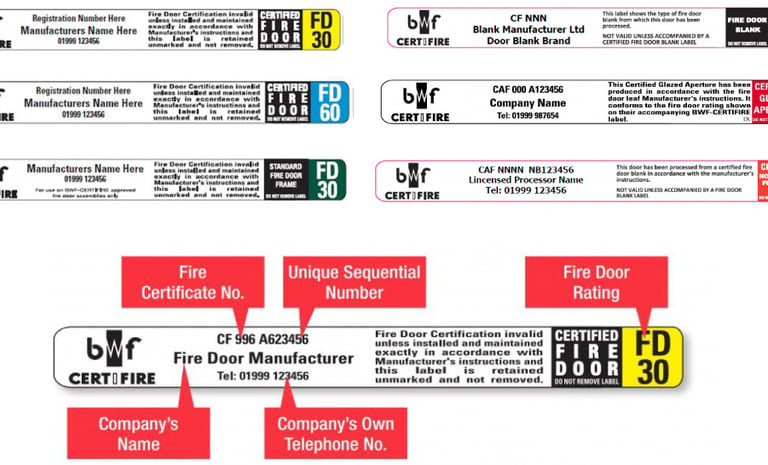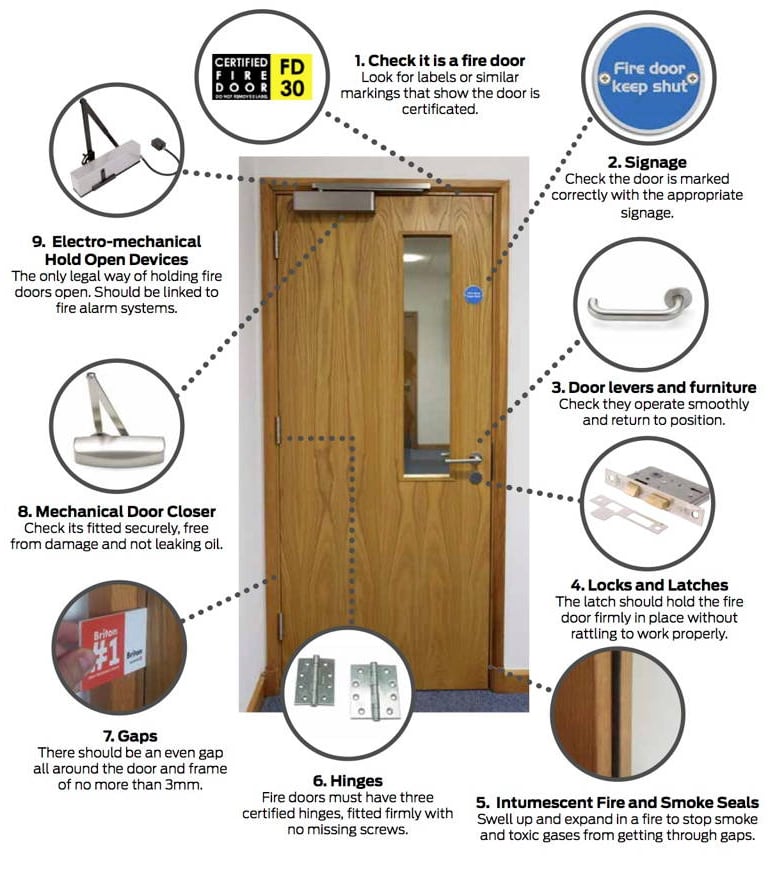
Fire Doors and Fire Rated Doors - What is the Difference?
Following on from our article on fire door and fire compartmentation surveys from our last issue we turn our attention to the difference between Fire Certified and Fire Rated doors to help schools stay compliant and safe.
What is a Fire Rated Door?
A Fire Rated Door is built using materials that resist fire but has not been fully tested as a complete door set.
This means it might look the same as a certified door, but no one knows how it will perform in a real fire.
It does not have an official certificate of testing; and
Many assume it meets regulations — but most Fire Rated Doors do not comply unless the manufacturer can prove certification.
In short: “Fire Rated” doesn’t always mean “fire safe”.
Fire Door Ratings (FD Ratings)
Fire doors are rated based on how long they can resist fire.
You’ll often see these markings on the top edge of the door:
Rating Fire Resistance
FD30 30 minutes
FD60 60 minutes
FD90 90 minutes
FD120 120 minutes
Check for a label or tag on the top or side of the door leaf (and sometimes the frame) to confirm its rating.
What is a Fire Certified Door?
A Fire Certified Door has been fully tested under strict laboratory conditions. Both the door and the frame are tested together as a complete set to make sure they can resist fire for a set amount of time.
The door and frame must always be installed together — never replace one without the other;
Each door comes with manufacturer certification proving it has passed official fire tests;
Only the hardware (hinges, handles, closers, etc.) that was tested with the door can be fitted. Adding extra fittings (like hooks or door stops) can void the certification; and
Even a certified door can fail if fitted incorrectly, for example if the frame gaps are too large or filled with the wrong materials.
In short: A Fire Certified Door is a tested, approved, and proven fire safety system — when installed correctly.
The door should have a label or plug stating the fire rating, however, if there is no plug or label a fire risk assessor can use a variety of knowledge-based assessment to determine whether the door is a “Nominal Fire Door”, this means that after inspecting the door, the assessor is of the view the door is likely to withstand a fire condition for a minimum of 30 or 60 minutes.
Whether the door is a fire rated fire door or a “Nominal Fire Door” areas like will need to be appropriately fire stopped.
Maintenance & Inspection
Fire doors need regular checks to stay effective.
At least once a year (by law);
Every 6 months is best practice; and
High-use areas (e.g., corridors, classrooms, exits) should be checked more often
Look for:
Damage to the door or frame;
Gaps around the edges;
Missing or damaged seals;
Faulty self-closing mechanisms; and
Incorrect or added hardware.
Only trained professionals should carry out full inspections and maintenance — they understand the fire standards and how to keep certification valid.
Maintenance & Inspection
If you are a caretaker, site manager, or part of the premises team, you help support the school’s “Responsible Person” (often the headteacher, business manager, or site lead) under the Fire Safety Order.
It’s your job to make sure that checks are done and any faults are reported immediately.
Book a Survey
If you would like a quotation for a fire door and/or fire compartmentation survey, please contact our client support team via info@handsam.co.uk.
We look forward to hearing from you.
HANDSAM RESOURCES




Office 27, East Moons Moat Business Centre
Oxleasow Rd, Redditch B98 0RE
Phone: 0333 207 0737


